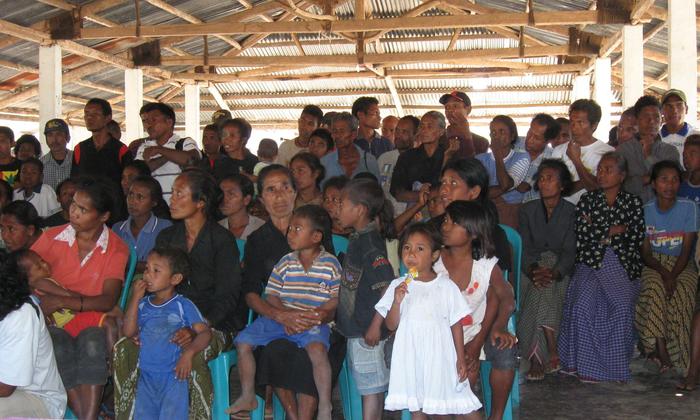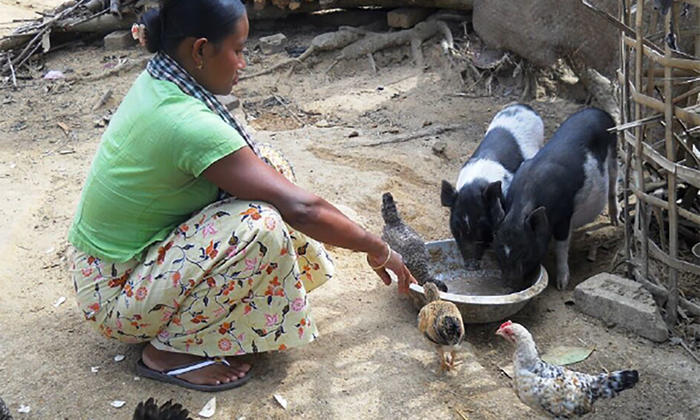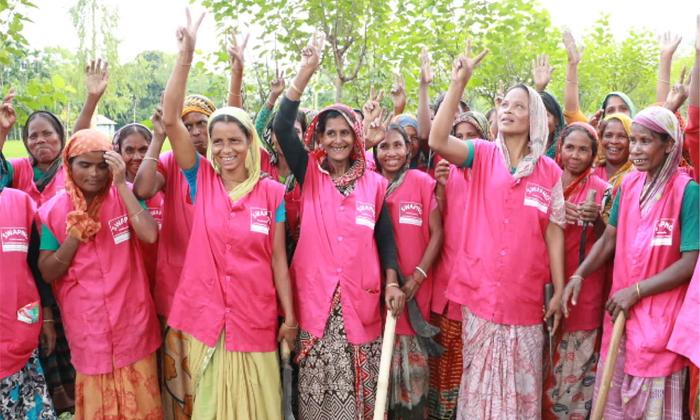The Programme interventions were aligned with the priorities of the government of Guinea-Bissau: increased access to social services and infrastructure, an emphasis on access to well-balanced feeding for children, women and newborns
Case study
Lessons learned from the implementation of the joint programme on nutrition in Guinea-Bissau

SDGs ADDRESSED
This case study is based on lessons from the joint programme, Guinea-Bissau: promotion of a multi-level approach to child malnutrition
Read more
Chapters
Project Partners





1. SUMMARY
The joint programme, “Promotion of a multi-level approach to child malnutrition” (the Programme) aimed to reduce child malnutrition and mortality by improving the country's capacity to monitor and treat malnutrition and by promoting better nutrition and food practices. At the beginning of the Programme, one in seven children in Guinea-Bissau died before reaching the age of five, and more than a quarter of all children under five were stunted.
The Programme was in line with the National Strategy for Poverty Reduction and the National Health Development Program (PNDS). It sought to strengthen primary health care through a minimum package of activities, effectively involving communities in management and decision-making for health issues and for greater access to health services. The Programme was also aligned with the United Nations Development Assistance Framework (UNDAF) priorities through its dedication to improving the capacity of health system and reducing infant and maternal mortality.

Children working in a school garden
2. THE SITUATION
At the beginning of the Programme, Guinea-Bissau’s child nutrition indicators were worrisome. According to a nutritional survey using the SMART methodology (November 2008), the rate of exclusive breastfeeding up to six months was only 28 per cent. Stunting affected 28 per cent of children and its prevalence was higher in the poorest regions such as the east at 32.3 per cent. The severe form of stunting affected 9.2 per cent of children and was highest in the eastern region at 11.6 per cent. Severe acute malnutrition affected 1.2 per cent of children under 5 years, with highest incidences again seen in the east at 1.8 per cent. In addition, 17 per cent of children under 5 years were underweight, with a higher prevalence in the north at 20 per cent and 22.4 per cent in the east. The severe form of underweight affected 3.9 per cent including 4.8 per cent in eastern and northern regions. In this context, the prevention of malnutrition was crucial, and the Programme applied a community-based approach to improve knowledge and practices of infant feeding, exclusive breastfeeding and improved complementary feeding.
Ana Sila (inset), a student of the Dandum School,inspired her mother Sira Boi Camara to plant a garden at home
3. STRATEGY
The Programme intervention consisted of four approaches:
- Reinforcing the capacities of existing health and nutrition rehabilitation centres to treat malnourished children;
- Building the capacity of 150 communities in the most vulnerable areas to promote basic nutrition counselling and surveillance;
- Developing nutrition activities at 150 community schools to teach children good nutrition practices and ensure that they eat vegetables at least once a day; and
- Building the capacity of the Ministry of Health to effectively monitor nutritional activities at the local level.
The Programme interventions were aligned with the priorities of the government of Guinea Bissau. Increased access to social services a nd infrastructure was one of the four priority intervention areas of the Poverty Reduction Strategy Paper (PRSP), with an emphasis on access to well-balanced feeding for children, women and newborns. The National Health Development Plan 2008-2012, highlighted growth monitoring, micronutrient supplements and exclusive breastfeeding as key elements in the minimum package of interventions for children under five.
The Programme supported strengthening the national capacity in reducing child malnutrition and mortality, particularly in the most vulnerable areas, by introducing a multilevel approach that involved major stakeholders as well as communities. The Programme was designed to complement ongoing efforts to increase access to social services and infrastructure as a priority area of government policies.
The Programme contributed to the UNDAF Outcome 31 and to MDG 1- eradicate extreme poverty and hunger and to MDG 4- reduce the under-five mortality rate. The aim was to reduce the prevalence of underweight children of under-five and improve the nutritional status of school children through educating them and their parents on food security and nutrition.
1 The most vulnerable populations have access to quality basic social services and the management capacity of the national institutions strengthened by 2012
4. RESULTS AND IMPACT
The key results from the Programme included:
- The management of acute malnutrition was implemented in 24 nutrition rehabilitation and 94 health centers. 100 per cent of beneficiary communities trained community health workers (816 against 600 planned) in all three beneficiary regions in the early detection and prevention of stunting and other forms of malnutrition.
- 167 school gardens were established in beneficiary communities (against 150 initially planned) and 90 per cent of school children were consuming vegetables produced in school once a day.
- The Ministry of Health improved its capacity to effectively monitor nutritional activities at the local level to provide updated data on nutritional status in the Programme areas. A communication and advocacy strategy was implemented to raise awareness and increase citizen participation in MDG-related policies and practices, including partnerships with community radio, communities, regional authorities, teachers and citizens.
- The direct involvement of children and parents (especially mothers) in the cultivation of school gardens greatly increased awareness of horticulture among beneficiaries. This resulted in a growing interest among women's groups to use FAO’s support to grow vegetables in the schools for children.
- Nutrition trainings yielded behavioral changes. UNICEF supported mothers’ groups in health centers to advise on exclusive breastfeeding, provide information on food and hygiene, detect early signs of malnutrition and suggest visits to health centers in cases of malnutrition or pregnancy.
- Rates of exclusive breastfeeding significantly increased thanks to the advocacy of mothers’ groups and breastfeeding support groups.

Food pyramid poster in Portuguese, created by the Programme
5. CHALLENGES
Initially, the Programme faced challenges coordinating between different UN agencies which were not accustomed to joint implementation and joint monitoring.
Challenges related to national counterparts pertained to insufficient involvement of the Ministry of Education at the central level, and insufficient involvement of regional authorities in monitoring of nutrition and food security activities. Improving the reporting quality at the health centers level also required some effort.
Additionally, despite advocacy efforts, nutrition-related indicators were not included in the national health information system. This prevented the country from having nutrition-related data treated, managed and processed in an institutionalized and sustainable manner.
During the post-coup d’état period, from April to August 2012, UN agencies faced significant challenges in coordinating with governmental counterparts due to the absence of legitimate national interlocutors. Also, the coup resulted in late request and reception of funds and, consequently, some agencies had financial constraints. This caused delay in purchasing and a shortage of supplementary feeding provisions from January to November 2012. Some agencies had to continue implementing activities with internal resources while waiting for funds. In July 2012, under the overall supervision of the UN Resident Coordinator, the Programme team revised its annual work plan and strategies, adapting it in order to be able to re-launch implementation activities.
During the post-coup d’état period, from April to August 2012, UN agencies faced significant challenges in coordinating with governmental counterparts due to the absence of legitimate national interlocutors.
There were also a limited number of implementing partners in nutrition at the national level and this posed a challenge when handing over Programme results.
During the post-coup d’état period, from April to August 2012, UN agencies faced significant challenges in coordinating with governmental counterparts due to the absence of legitimate national interlocutors
6. LESSONS LEARNED
- The support of volunteer groups that promoted exclusive breastfeeding and good child feeding practices at the community level proved very effective. Volunteers were identified at the village level, based on criteria such as residence in the same village, being a mother of at least one child and a willingness to participate in awareness activities. After receiving training from healthcare professionals, volunteers identified mothers who had problems breastfeeding, provided them advice on good practices and referred them to health centres in case of complications. Each year, the government of Guinea-Bissau organizes the national month of exclusive breastfeeding where these volunteers continue to work.
- The participation of community leaders, influential people and religious leaders also effectively fought against food taboos and other practices that undermine breastfeeding and correct child feeding.
- School gardens were also very successful in promoting nutrition. A total of 167 school gardens were established in beneficiary school communities against 150 initially planned. The volume of food production continued to increase and women associations in 71 communities replicated school gardens at the household level. 83 community gardens effectively produced vegetables and provided 40 per cent of production for school children’s consumption. Nationally, communities continued to enlarge the production area.
- Besides the efforts of the participating agencies and national partners, a defining factor in the successful establishment of school gardens was the active involvement of local school teachers and school children as well as women’s associations at the community level.
- The Ministry of Health’s designation of nutrition focal points at the regional level was crucial in achieving improved performance in terms of numbers of children screened, treated and reported for malnutrition and undernutrition. Similarly, Community Health Workers’ involvement also proved highly complementary to the work being done by health personnel and increased the numbers of children screened and referred to treatment centres.

7. SUSTAINABILITY AND POTENTIAL FOR REPLICATION
Funds were mobilized to ensure that nutrition related activities continued to be implemented after the Programme ended. Involvement of central level authorities, technical level staff at the central and regional levels and local communities contributed to stronger national and local ownership and boded well for future interventions to build on the Programme’s results. Alignment and integration of community based nutrition interventions using Community Health Workers, trained for high impact interventions designed to reduce morbidity and mortality, could also work in subsequent nutrition efforts.
The high engagement level of the school children, school teachers and parents in the school gardens activities, as well as maintenance of first replicated gardens at the community level by women associations and the general expansion of school garden surfaces, are strong signs of the sustainability of the Programme’s results.
At the close of the Programme, a series of meetings were held within the implementation team and with heads of participating agencies, especially UNICEF and WFP, indicating that they were committed to continue investing in nutrition and food security promotion.
The Programme’s promotion of a multi-sectorial approach to child malnutrition at the national level and its recommendations for sustainability tools and interventions will be of high added value to government and development actors as well as civil society in their efforts to reduce child mortality through addressing child malnutrition.
Students of the Dandum School, in the BoÈ Gab˙ region where 195 students, 4 teachers ans 19 members of the community were involved in the local school garden







